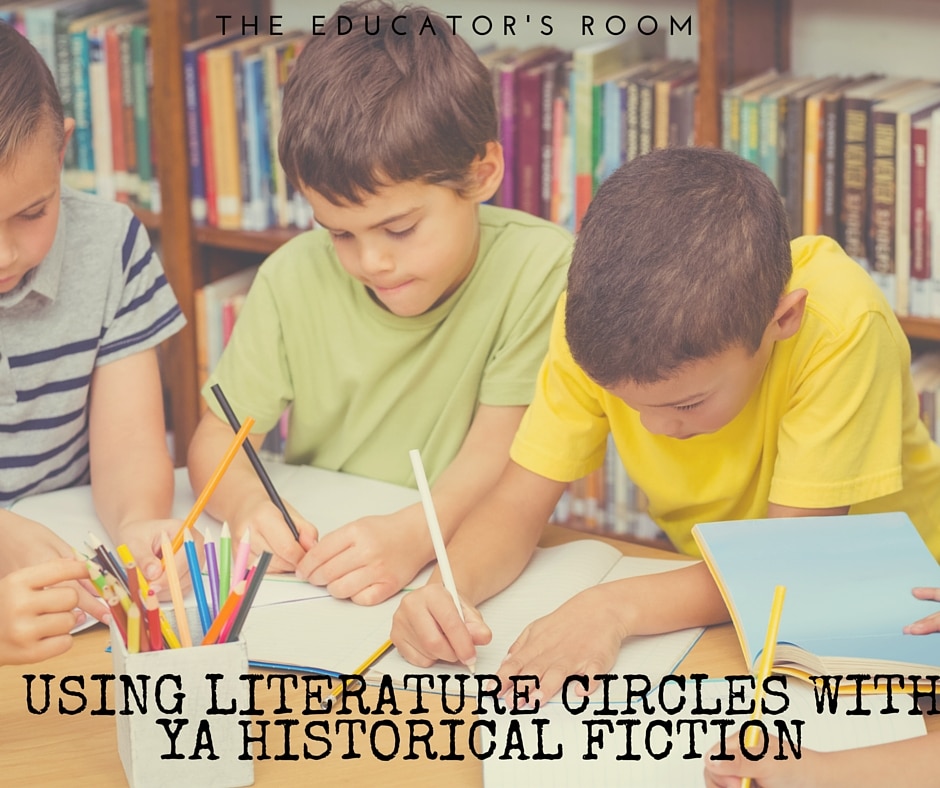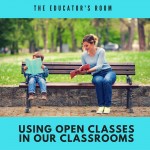As English teachers, we are constantly told that “choice matters” and “choice gives students a voice.” Multiple experts (Kelly Gallagher, Penny Kittle, Donalyn Miller, Nancie Atwell, Harvey Daniels, just to name a few) have written multiple books and articles on the topic. But I think many teachers struggle with how to incorporate choice into a curriculum that feels more and more taken over by testing and mandated curriculum. One way is by running a Reader’s Workshop in your class. Another is to do Literature Circles.
Over a series of posts, I’ll explore why and how Literature Circles can be successful in meeting standards, but also for creating life-long readers and thinkers.
For now, let me introduce you to the books my eighth graders are currently reading in their Literature Circles. For fourth quarter, we wanted to focus on world/historical fiction, so after cruising some of my favorite authorities on YA literature, we settled on the following six titles for our students to choose from.
My Name Is Not Easy by Debby Dahl Edwardson takes place in an Alaskan boarding school in the 1960’s. Luke–an Iñupiaq–and his brothers attend Sacred Heart because the closest public school is hundreds of miles away from their village. They are forbidden to speak their native language. Students segregate themselves by race in the cafeteria as if they are choosing sides in a war. This story not only brings up many historically significant topics: the Cold War and civil rights being at the top of the list.
A Long Walk to Water by Linda Sue Park is a dual narrative chronically the true story of Salva and the fictional story of Nya–both young people who walk long distances just to survive. Taking place in Sudan, Salva’s narrative unfolds in 1985 and Nya’s in 2008. They seem completely unrelated other than that they both walk, however the ending of the book brings both Nya and Salva together in a lovely twist. The book is especially relevant in light of the Flint Water Crisis and the controversy surrounding Syrian refugees.
Climbing the Stairs by Padma Venkatraman is set in British-occupied India during World War II. Vidya is fourteen and dreams of going to college, which would be unusual for most women then. But Vidya’s family is fairly liberal and well-off and very supportive. Tragedy strikes her family, however, forcing them to move in with her ultra-conservative uncle’s family. It seems like maybe her dreams of an education will be squashed and she will be destined to be “seen and not heard” and married off to the man with the best offer…until she finds her grandfather’s library. Students can make historical and political connections as well as personal connections about not giving up on a dream.
Far From Home by Na’ima B Robert is another dual narrative set in Africa, this time in Zimbabwe. Tariro was born on her ancestral farm land under the baobab tree in the 1960’s. At fourteen, her life is wonderful…until the white settlers violently expunge them from their land. Twenty-five years later, Katie is living on the same farm land with the baobab tree. She is also fourteen and has a perfect life. Until her family is forced off the land and back to London. The narratives of Tariro and Katie evoke important discussions about privilege and human rights.
The Surrender Tree: Poems of Cuba’s Struggle for Freedom by Margarita Engle chronicles the life of Rosa–a war nurse of sorts–who knows how to heal with medicines that are made from the wild plants in her land of Cuba–which is occupied by the Spanish. Rosa makes it her mantra to try to save everyone: Black, White, Cuban, Spanish. The lingering question, however is, will Cuba ever be healed? This prose poetry is written in both English and Spanish.
Never Fall Down by Patricia McCormick places the reader in war-torn Cambodia with an eleven-year old Arn Chorn-Pond as he recalls the day the soldiers of the Khmer Rouge came in and separated him from his family and forced him into a child labor camp where he watched others fall down dead from starvation, malaria, and the shots of the Khmer Rouge’s guns. He watches prisoners get marched to the killing fields. Music saves his life, but not before he is also forced to take up a gun and join the Khmer Rouge.
Students were given a handout with all six titles, a summary, and a picture of the book. I then book talked each book (I read them all prior to the kids receiving them), and asked the students to rank the books 1-6, with 1 being their first choice, 2 being second, and so on.
I used their choices to form the groups, making small tweaks so that each group would have a maximum of six people (some only had two people), and that I didn’t place any mortal enemies with each other (a legit concern when you teach middle school). For the most part, these groups have worked out well.
In forthcoming articles, I will share the procedures my students follow when meeting in groups, what they will be graded on, and what some of the issues I am having are (and what I am doing to solve them).

Research from Literature Circles by Harvey Daniels and Nancy Steineke






